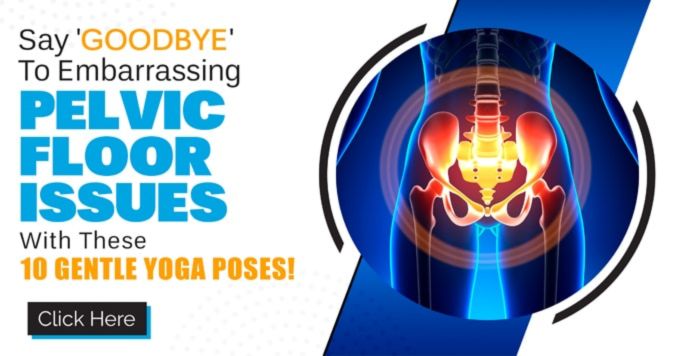Welcoming a new life is a miraculous journey, yet the postpartum phase poses unique challenges in restoring physical vitality. Crucial among these is the revival of core strength for a resilient maternal physique. This piece delves into the significance of postpartum core exercises, addressing common issues, suggesting secure routines, and offering tips for the effortless integration of deep core muscles into daily life. Prioritizing these exercises is pivotal for the well-being of both mother and child, ensuring a healthier, more empowered postpartum experience.
Understanding the Postpartum Body

Understanding the postpartum body is essential for new mothers navigating the physical changes after childbirth. The postpartum period is a time of adjustment and recovery. Women need to be aware of their bodies' changes during this time to promote healing and overall well-being.
Common postpartum changes include abdominal muscle separation, vaginal soreness, breast engorgement, and hormonal fluctuations. By understanding these changes, women can better care for themselves and seek appropriate support and resources for a smooth transition into motherhood.
Importance of Postpartum Core Exercises
Postpartum core exercises play a crucial role in the recovery and rehabilitation process for women after childbirth. These exercises specifically target the abdomen, lower back, and pelvic floor muscles, which undergo significant changes during pregnancy and delivery. Engaging in postpartum core exercises helps to strengthen and tone these muscles, promoting better posture, stability, and overall physical well-being.
These abdominal exercises can also aid in can also aid in preventing or alleviating common postpartum issues such as diastasis recti (separation of the abdominal muscles) and urinary incontinence. Moreover, postpartum core exercises can help women regain their pre-pregnancy shape and confidence, enhancing their overall quality of life.
When to Start Postpartum Core Exercises?
Postpartum core exercises are an essential aspect of recovery after childbirth. However, it is critical to approach these exercises with caution. The timing for starting postpartum core exercises can vary depending on individual circumstances.
In general, it is recommended to wait at least 6 weeks after a vaginal delivery and 8 weeks after a cesarean section before beginning any strenuous exercise routine. This gives the body enough time to heal, and the abdominal muscles regain strength. It is important to start slow and listen to your body. Then, gradually increase the duration and intensity of the exercises. By creating postpartum core exercises at the right time, women can safely strengthen their abdominal muscles and improve their fitness levels after giving birth.
Common Postpartum Core Issues

During the postpartum period, new mothers often face a range of core issues that are common and expected.
1. Diastasis Recti [¹]
This is the separation of the abdominal muscles during pregnancy, which can lead to a weakened core and potential back pain.
2. Pelvic Floor Dysfunction
This can result in urinary incontinence, pelvic pain, and discomfort during contact due to inadequate pelvic floor muscle contraction.
Post-delivery hormonal changes can also contribute to mood disorders, such as depression and postpartum anxiety. Additionally, healthcare professionals must be aware of common core issues, including pelvic organ prolapse, and provide appropriate support and resources to new mothers.
Safe and Effective Postpartum Core Exercises
After giving birth, women need to focus on strengthening their core muscles.
These exercises help regain strength and stability in the abdominal wall and pelvic muscles.
It's essential to start with gentle exercises and gradually progress as your body heals. Always consult with your healthcare provider before beginning any postpartum exercise routine. Here's a basic postpartum core exercise routine:
1. Pelvic Tilts
Lie on your back with your knees bent and feet flat on the floor. Place your arms on your sides or extend them out to the sides at shoulder level. Engage your core while flattening your back towards the floor. Hold this position for 7 seconds before returning to the starting position. Make sure your breathing is normal. Complete 10 repetitions, 1-2 sets.
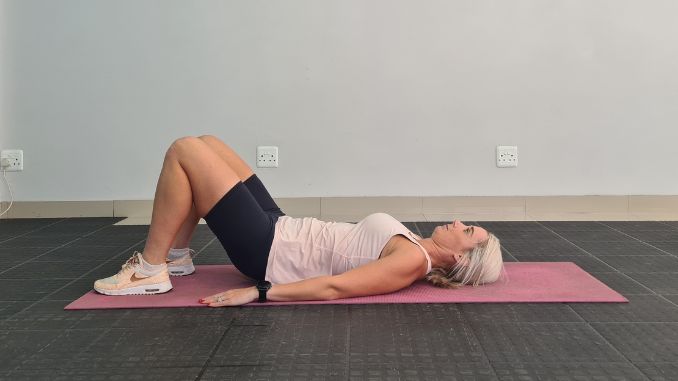
2. Lateral Leg Lifts
Begin in an upright standing position with your legs hip-width apart, maintaining good alignment with your head, shoulders, hips, and legs. Place your hands on your hips and engage your core. Lift one leg out to the side, ideally to a 30 to 45-degree angle. Keep your toes pointing forward. Lower your leg to the starting position and repeat the movement. After several repetitions, repeat the movement on the opposite side.

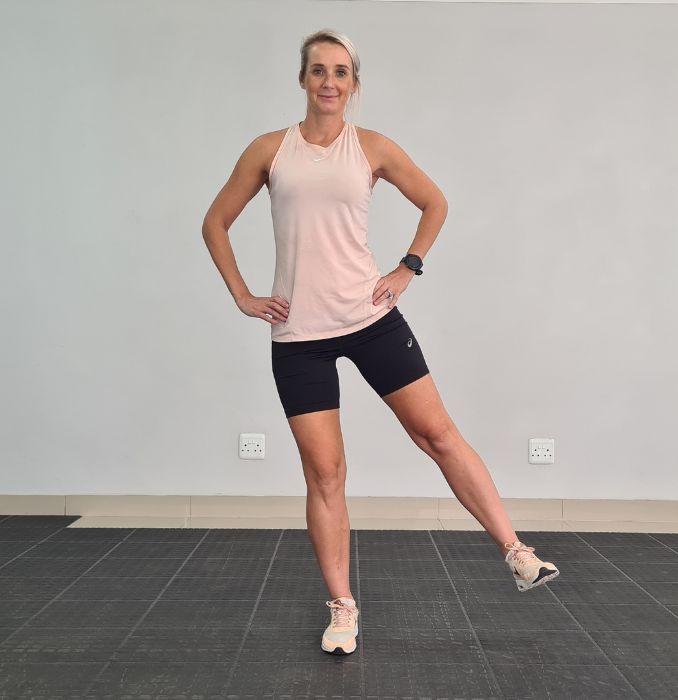
3. Bird Dog
Begin in a 4-point position, with your hands underneath your shoulders and your knees underneath your hips, maintaining good alignment with your head, shoulders, and hips. Contract your abdominal area. Extend one arm forward to be in line with your shoulder, then gently extend your opposite leg straight behind your body. Keep your arm, shoulders, hips, and right leg parallel to the floor. Hold the position for a couple of seconds. Repeat the movement several times at your own pace. Then, repeat the sequence of movements on the opposite side.
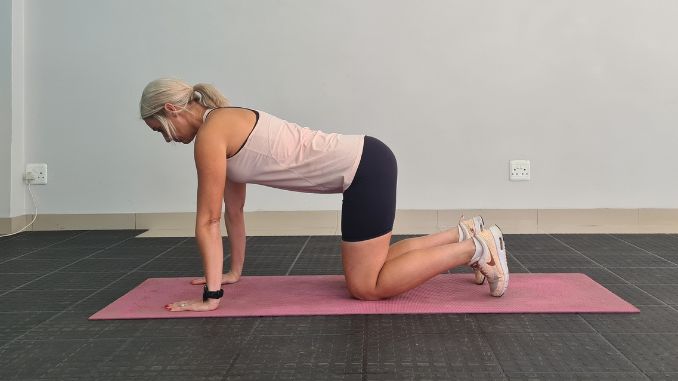
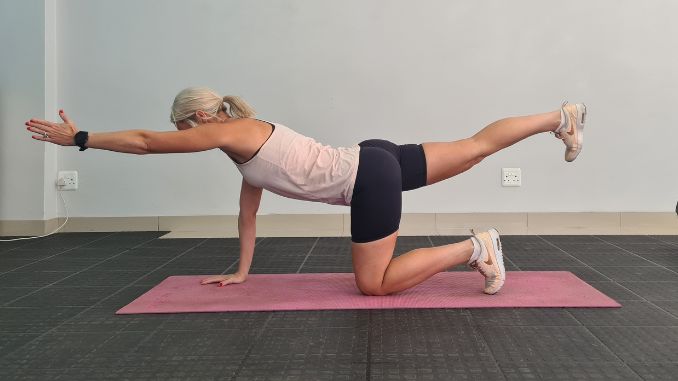
Afterward, keep your left arm, shoulders, hips, and right leg parallel to the floor. Hold the position for a couple of seconds. Repeat the movement several times at your own pace. Then, repeat the sequence of movements on the opposite side.
To make the movement more challenging, you bring your left hand and right foot to your back, tap your right foot, and inhale as you return to the parallel position.
4. Side Plank
Move into a forearm plank position, maintaining good alignment with your head, shoulder, hips, and legs. Contract your core and rotate your body to one side to move into a side plank position, keeping your feet together and placing your opposite hand on your hip. Hold this position for 30 seconds. Take several deep belly breaths, in through your nose and out through your mouth. Relax and return to the starting position. Switch sides to repeat the movement.
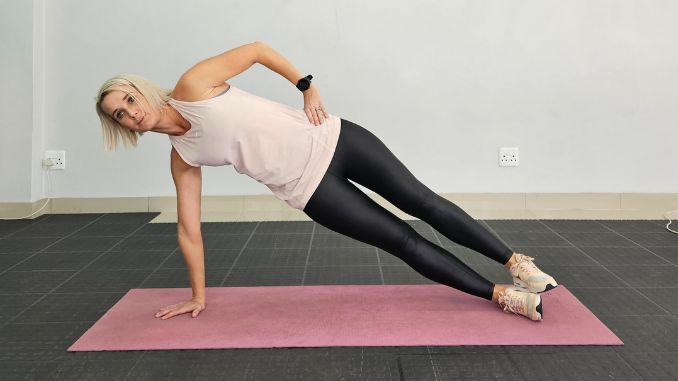
5. Bridge
Lie on your back with your knees bent and your feet flat on the floor. Place both arms on the side with your feet shoulder-width apart. Engage your core. Push from your heels to lift your hips, keeping your knees, hips, and shoulders straight. Hold the position for a couple of seconds. Lower your hips back down, relaxing the abdominal area. Repeat the movement.
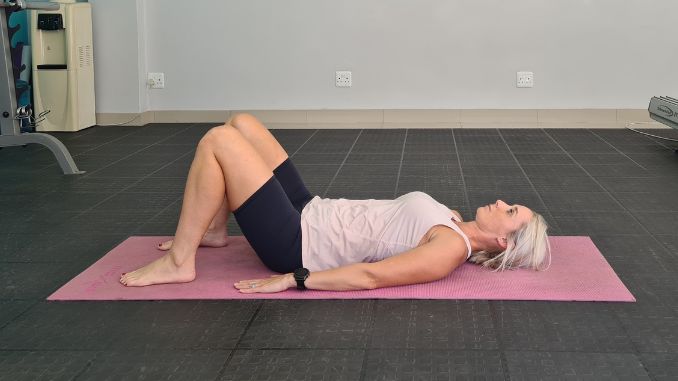
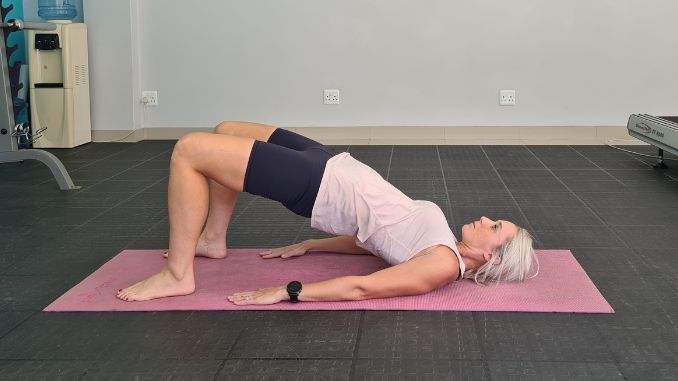
Remember to listen to your body, progress as your body allows, and immediately stop if you feel pain or discomfort. As you regain strength, you can gradually introduce more challenging activities into your routine.
Tips for Incorporating Postpartum Core Exercises
into Your Daily Routine
After giving birth, women need to focus on strengthening their core muscles, including the transverse abdominals, to ensure the proper recovery of their bodies. This postpartum period is crucial for restoring strength and stability, especially in the core and pelvic floor context. The process involves not only the core muscles but also the connective tissue and the pelvic floor muscles.
During pregnancy and childbirth, the connective tissue in the abdominal region may have undergone significant stress and stretching.
1. Engaging in Pelvic Floor Strengthening Exercises
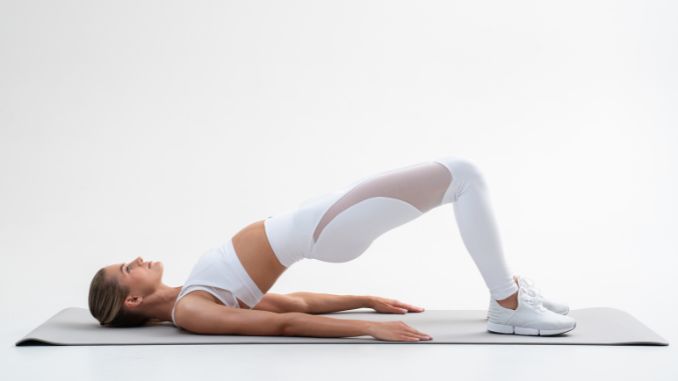
- Essential to promote the healing and toning of these areas.
- Targeted exercises can help restore strength and function as the pelvic floor muscles lengthen during childbirth.
- Incorporating upper body exercises into your postpartum routine is beneficial.
2. Gradual Intensity Increase
A tip for incorporating postpartum core exercises is to start gently and increase intensity over time.
Begin with gentle exercises like pelvic tilts and Kegels.
Progress to more challenging moves such as planks and side planks.
3. Choosing the Right Time
- Finding the right time in your day is crucial for consistency.
- Consider doing these exercises during naptime or in the evening after the baby has gone to bed.
- Making core exercises a regular part of your daily routine is critical to rebuilding strength and improving postpartum fitness.
This holistic approach ensures that the upper body, core, and pelvic floor work harmoniously to support overall stability and well-being. By focusing on all these aspects of postpartum fitness, women can promote a healthy and effective recovery process, allowing them to regain strength and vitality after childbirth.
Nutritional Considerations for Postpartum Core Recovery
Nutrition is pivotal in postpartum recovery, helping the healing process and supporting overall well-being. As a new mother, your core muscles undergo significant changes during pregnancy and childbirth. Providing it with the proper nutrients is essential to rebuild your strength and regain core stability.
1. Dietary Support

During the postpartum period, your body requires a balanced diet that provides essential nutrients for healing and recovery. Consider incorporating the following elements into your postpartum diet:
- Protein: Protein is integral for tissue repair and muscle recovery. Include lean sources like chicken, fish, tofu, and legumes in your meals.
- Calcium: Calcium is indispensable for bone health and muscle function. Fortified plant-based milk, dairy products, and leafy greens are excellent sources.
- Iron: Iron helps combat fatigue and supports overall health. Include lean meats, beans, lentils, and fortified cereals.
- Omega-3 Fatty Acids: Omega-3s aid in reducing inflammation and promoting brain health. Incorporate fatty fish like salmon, walnuts, and flaxseeds into your meals.
- Fiber: Foods high in fiber can help digestion, which can be precisely beneficial during the postpartum period.
- Folate: This is vital for cell division and repair. It's found in leafy greens, citrus fruits, and fortified cereals.
- Vitamin D: A crucial vitamin for bone health. Consider getting sunlight exposure or taking a supplement if your healthcare provider recommends it.
- Supplements: Seek advice from your healthcare provider on whether you need specific supplements based on your nutritional needs. Avoid self-prescribing supplements, as excessive intake can be harmful.
- Hydration: Staying well-hydrated is essential for postpartum recovery. Adequate hydration supports healing, helps maintain energy levels, and supports milk production. Drink enough water throughout the day to stay healthy and hydrated.
Balancing a nutritious diet with proper hydration can enhance your postpartum recovery, support core healing, and provide you with the energy needed for the demands of new motherhood.
2. Breastfeeding Considerations
If you're breastfeeding, it's essential to ensure you're getting enough nutrients for you and your baby. Speak with a healthcare provider or a lactation consultant for personalized dietary recommendations.
Stress Reduction Techniques for New Mothers
The postpartum period can be overwhelming, with new responsibilities, sleep deprivation, and hormonal changes contributing to stress. Stress management [²] is crucial for your well-being and can positively impact your postpartum recovery.

Integrate yoga, meditation, or deep breathing into your daily routine to lessen stress and promote relaxation.
2. Set Realistic Expectations
Understand that sometimes it's normal to feel stressed and overwhelmed. Set lifelike expectations for what you can accomplish each day, and be kind to yourself.
3. Delegate and Accept Help
Don't hesitate to ask for assistance from family and friends. Accepting help with tasks like cooking or childcare can relieve some of the stress of new motherhood.
4. Physical Activity

In addition to postpartum core exercises, regular physical activity or chores can reduce stress, release endorphins, and improve mood.
5. Sleep
Whenever possible, prioritize rest. Sleep is essential for emotional well-being, so nap when your baby sleeps.
6. Professional Support

After giving birth, many women experience body changes, particularly in their core muscles. These muscles, including the abdominal and pelvic floor, can weaken and require special exercises to regain strength and stability. Seeking professional guidance for postpartum core exercises is crucial to ensure that these exercises are done safely and effectively. A qualified fitness professional or a pelvic floor physical therapist can assess each woman's needs and design a personalized exercise program targeting the specific areas that need attention.
They can also guide proper form and technique to prevent injury and maximize results. Additionally, they can monitor progress and adjust the program to ensure continued improvement. Overall, seeking professional guidance for postpartum core exercises is essential for women looking to regain strength and restore their bodies after childbirth.
Rebuilding your postpartum body is a journey, and a strong pelvic floor is an essential part of it. Check out our '10 Gentle Yoga Poses for a Strong Pelvic Floor' to help you regain your strength and confidence after childbirth.
Conclusion
Recovering strength in the postpartum phase is a gradual journey demanding patience and dedication. By comprehending the intricacies of the postpartum body, acknowledging prevalent core issues, and integrating secure and impactful exercises into your daily regimen, you initiate a path toward a more robust and healthier maternal physique.
This process goes beyond mere physical fitness; it involves nurturing your body to fortify you throughout the extraordinary voyage of motherhood. Cultivating an understanding of your body's needs and consistently committing to safe exercises foster a supportive foundation for physical and emotional well-being during this transformative period. Regular exercise, sufficient rest, and proper nutrition will contribute to your overall postpartum recovery.


